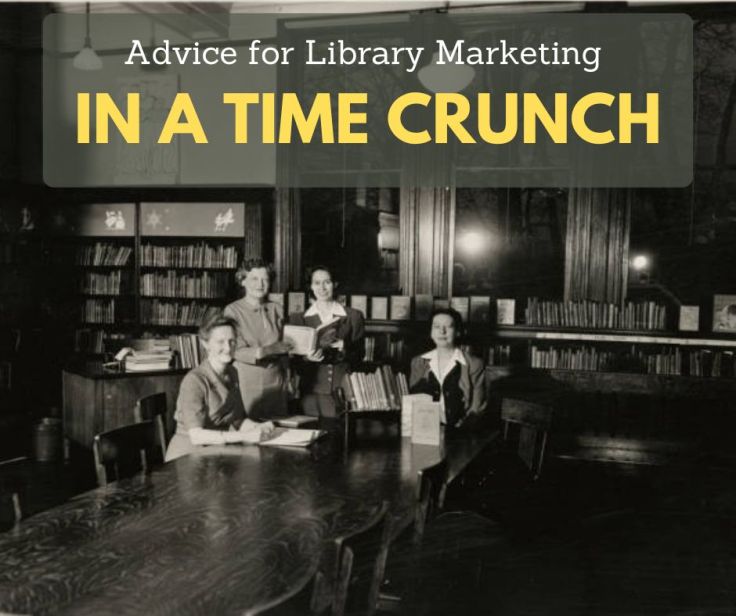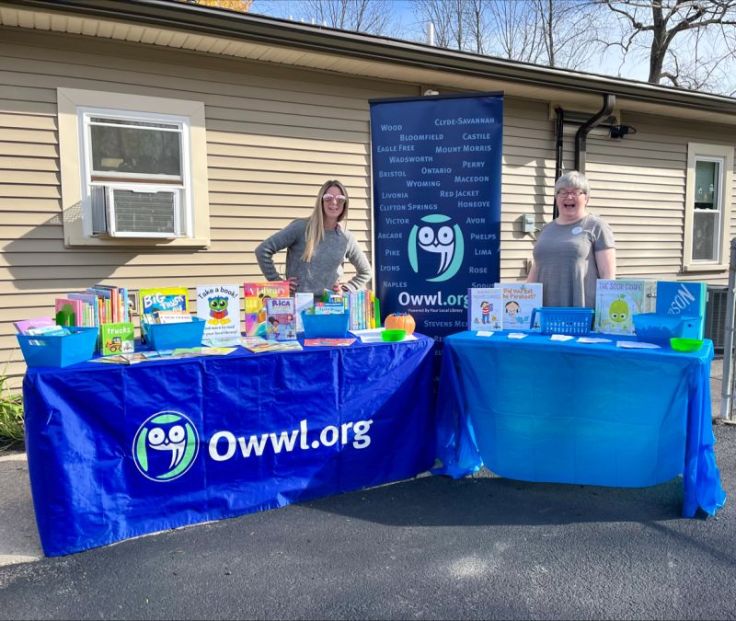
There is a powerhouse of a woman who works as program director for a library system in New York State’s Finger Lakes region.
Suzanne Macaulay began her career as a Children’s Librarian at Henry Waldinger Memorial Library in Valley Stream, New York in 2005. She’s worked at a few different libraries in New York and Pennsylvania but took her current role for the OWWL Library System just three days before everything shut down due to Covid. It’s a job she truly loves.
“Over the summer we were distributing backpacks full of school supplies to Head Start students to help their families prepare for Kindergarten,” remembers Suzanne. “The students’ faces would just light up when they got to pick their new backpack! One student was hugging their backpack so tight, I thought he might never let go–and I was a little nervous they would crush all the items inside! It was really a heartwarming moment.”
OWWL (formerly the Pioneer Library System) stands for Ontario, Wayne, Wyoming, and Livingston—the counties that Suzanne’s library system serves. It includes 42 member libraries scattered across 2500 square miles. The system itself is headquartered in Canandaigua, NY, a small city of about 11,000 residents located 30 miles south of Rochester.
I first met Suzanne at the Association of Small and Rural Libraries conference in 2021, where she co-presented on social media. This year at ARSL, she did two standing-room-only(!) sessions on library marketing.
“Marketing our services, materials, programs, facilities, and staff is incredibly important,” declares Suzanne. “It helps retain current patrons and acquire new patrons, but also proves the library’s continued value and relevance to taxpayers, funders, and community stakeholders.”
“I think that libraries–especially smaller libraries–tend to be humble because promoting the library sometimes feels like self-promotion. But people don’t know what they don’t know, and we cannot assume that everyone knows about libraries, particularly modern libraries.”
“There can also be this ambivalence in libraries to use terminology that is most often associated with for-profit businesses, and the word marketing can certainly fall into that. However, if hesitant staff begin to view marketing through the lens of What will get people interested or excited about our spaces, services, programs, materials, staff, resources, etc.? I think it will become easier.”
Suzanne knows how difficult it is for small libraries to promote themselves. In her role, she coordinates outreach, consults on youth services, helps secure state aid for library construction, manages continuing education for her libraries, and does the marketing. (I’m exhausted just making that list!) She is keenly aware of the time crunch small libraries face.
She also knows marketing can feel overwhelming, especially because most staff members don’t have training in social media or graphic design. So, Suzanne has some simple and practical advice for small libraries.
Suzanne suggests breaking your promotional campaign into three steps: market, message, and medium.
- Market: Who are you trying to target? If it is storytime, your who may be the caregiver of infants.
- Message: What do you want this audience to know? Sticking with storytime as an example, the what may be “Join us for books, songs, and new friends at Bouncing Babies every Monday at 10 a.m.”
- Medium: How are you going to get the what to the who? For storytime, maybe you’ll decide to send flyers to a local breastfeeding support group.
“Using this format helps the work feel less overwhelming, but it also helps you to be more intentional,” advises Suzanne. “You aren’t randomly posting to Facebook and hoping someone who may be interested sees it. Cross-sharing to social media is fine, but it shouldn’t be the default marketing for everything you are trying to promote about your library.”
“A quick example is our Books by Mail program. Most of the patrons enrolled in this program are seniors and older adults, and many of them do not have email addresses let alone Facebook accounts. Therefore, I cannot use social media as my primary medium. Instead, I mailed flyers to assisted living facilities and nursing homes, sent information to our counties’ Office of the Aging for their newsletters, and issued a press release to the local papers which many of our older patrons still read in print.”
Suzanne is also a big believer in adaptability in library marketing, especially for smaller libraries. She knows that the most effective way to promote your library may change over time.
“I used to be pretty rigid when it came to social media posting,” recalls Suzanne. “Once a week I would sit down and schedule four posts a day for the next seven days.”
“However, the way people began to consume information during Covid changed, and this scheduling system was no longer a good use of my time or always the most effective way to promote the library. Social media became very crowded during Covid, and it began to feel as though meticulously scheduled posts were getting lost in an oversaturated news feed.”
“Now I keep social a little looser and more spontaneous, focusing on quality over quantity. But I am more intentional about other ways to market such as issuing press releases and attending community events, both of which have been successful for us in the past year or so.”
And Suzanne has one more piece of advice for library marketers: get out of the building. “Covid truly did change how patrons interact with the library,” she says.
“Daily routines changed drastically, especially during periods of strict lockdowns followed by tiered reopenings. So, while it was always important for library staff to leave the building, I believe going out and meeting people where they are now is vital.”
Suzanne Macaulay
Suzanne gets her marketing inspiration from other libraries on social media. “Every day my feed is filled with creativity and inspiration,” she declares. “Library Twitter can be fantastic for filling my ‘idea parking lot.’ I think the key is to not only follow or look at other libraries just like yours.”
“For example, some of the best resources I’ve found and passed on to our libraries’ Youth Services staff have been from school librarians. Kelsey Bogan is an amazing example. Several of our (public) libraries switched up their teen spaces using the Dynamic Shelving approach she implemented in her high school library.”
“Look at big libraries, look at small libraries, look at other community groups, look at non-profits, look at businesses and decide what you like and what you don’t like. Approach it with ‘How could this look in our library? How can I scale [up or down]?’ It’s mining for ideas. We can learn so much from each other!”
“I believe libraries are doing incredible work, and it is incredibly important to share that work with others. Shout it from the rooftops! Also: stickers! Stickers are amazing! Give everyone library stickers!”
More Advice
Small but Mighty: The 6-Step Plan To Promote Your Library When You Have a Tiny Staff
My Biggest Piece of Advice for Anyone Who Does Marketing for Small and Rural Libraries
Subscribe to this blog and you’ll receive an email every time I post. To do that, enter your email address and click on the “Follow” button in the lower left-hand corner of the page.


November 30, 2022 at 2:09 am
each of your post are very help full, can you post on corporate library marketing
LikeLike